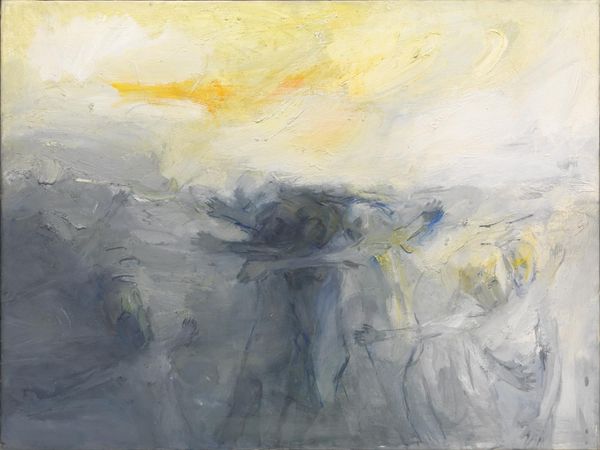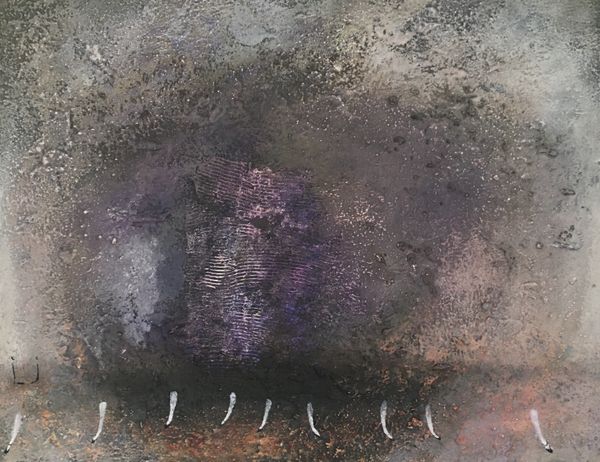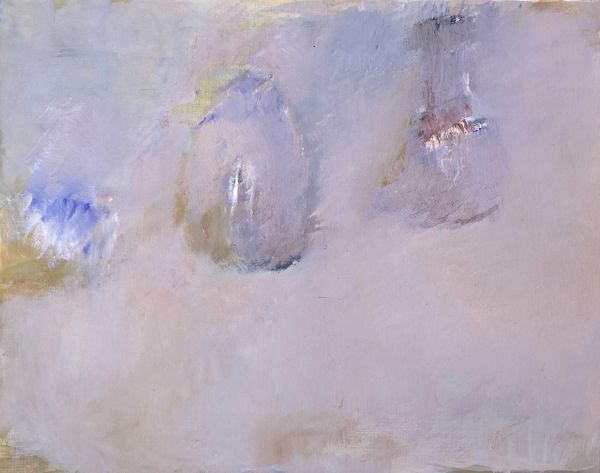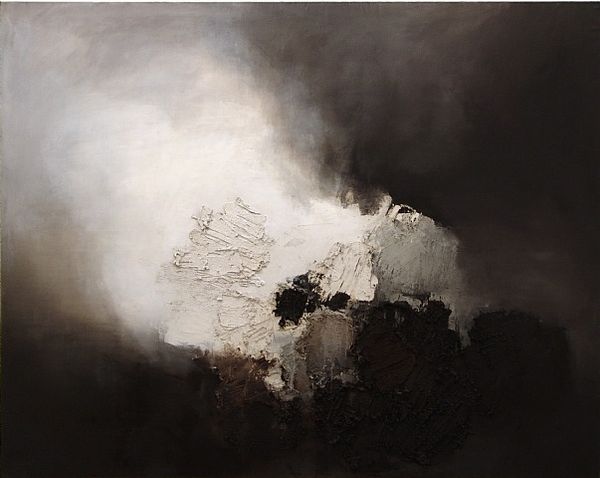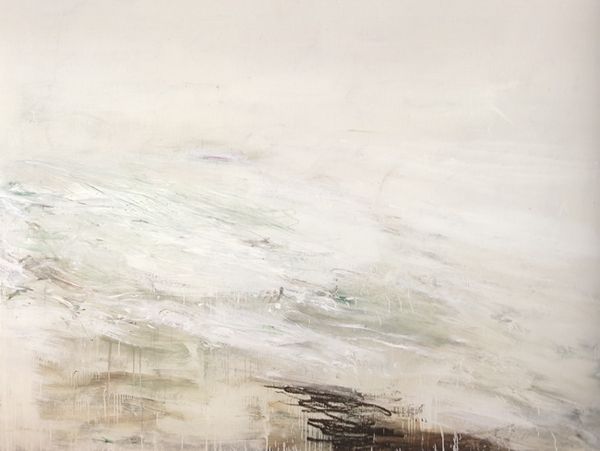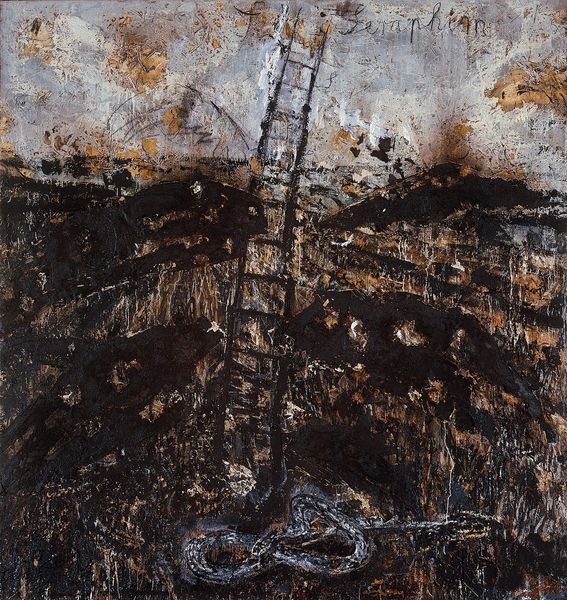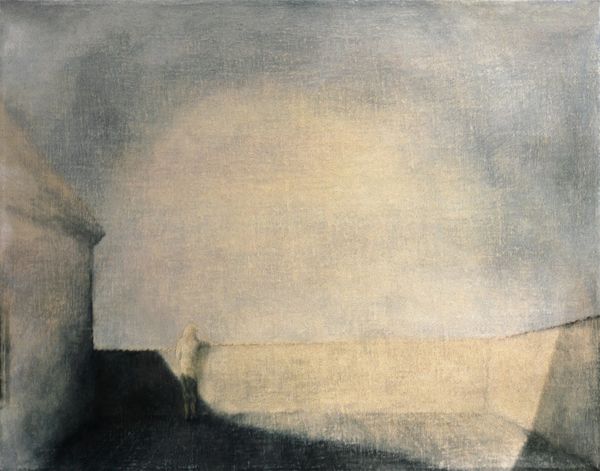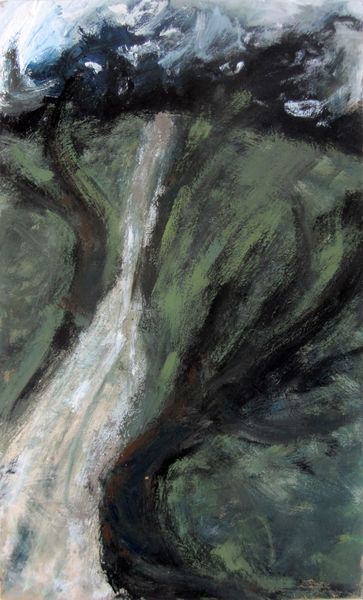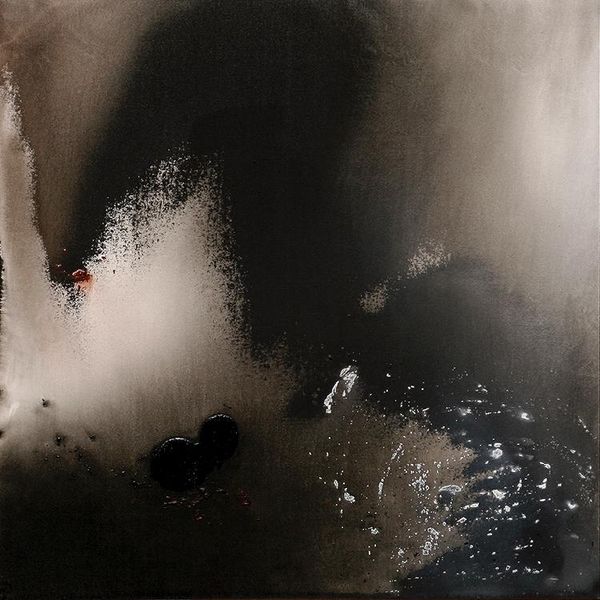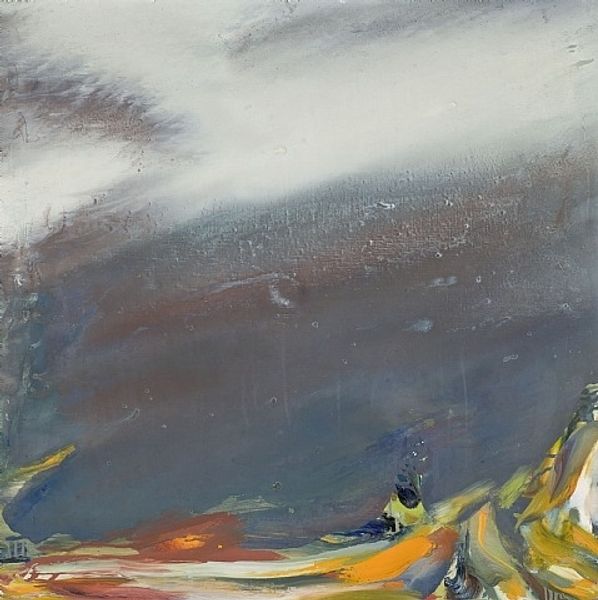
Dimensions: support: 635 x 762 mm frame: 800 x 930 x 90 mm
Copyright: CC-BY-NC-ND 4.0 DEED, Photo: Tate
Curator: Looking at Leonard Rosoman's "Bomb Falling into Water," one is immediately struck by its ominous tone. The canvas, measuring approximately 63 by 76 centimeters, captures a moment of destruction frozen in time. Editor: It's chaos, isn't it? The heavy grays and blacks swirling together evoke such a sense of dread. It's almost like the painting itself is trying to recoil from the impact. Curator: Indeed. Rosoman masterfully uses the materiality of paint to convey the raw energy of the explosion. The blurred edges and broken forms communicate the violence of the event, a scene he experienced during World War II. Editor: Knowing its origins, that explains the unsettled mood. You can almost feel the reverberations. The stark contrast between the plunging white bomb and the dark water is chilling. It's like a visual scream. Curator: And perhaps that is what Rosoman intended – to capture the visceral reality of war, unfiltered and immediate. It's a powerful, if unsettling, work. Editor: Absolutely. It stays with you, doesn’t it? I see now why it's considered a modern history painting. Striking.
Comments
tate 6 months ago
⋮
http://www.tate.org.uk/art/artworks/rosoman-bomb-falling-into-water-n05729
Join the conversation
Join millions of artists and users on Artera today and experience the ultimate creative platform.
tate 6 months ago
⋮
As a member of the National Fire Service, Rosoman had first-hand experience of fighting fires during German bombing raids. He was stationed in the East End of London, which was especially badly hit. He explained that Bomb Falling into Water was ‘painted in 1942 when I was in the N.F.S. and was the result of night after night fighting fires in the London dock area – bombs were falling into the Thames and into the water in the docks.’ Gallery label, December 2016

